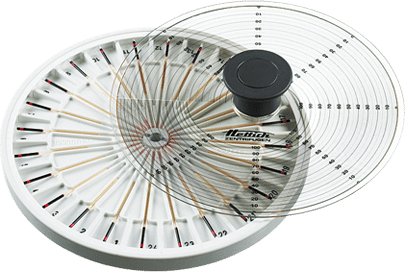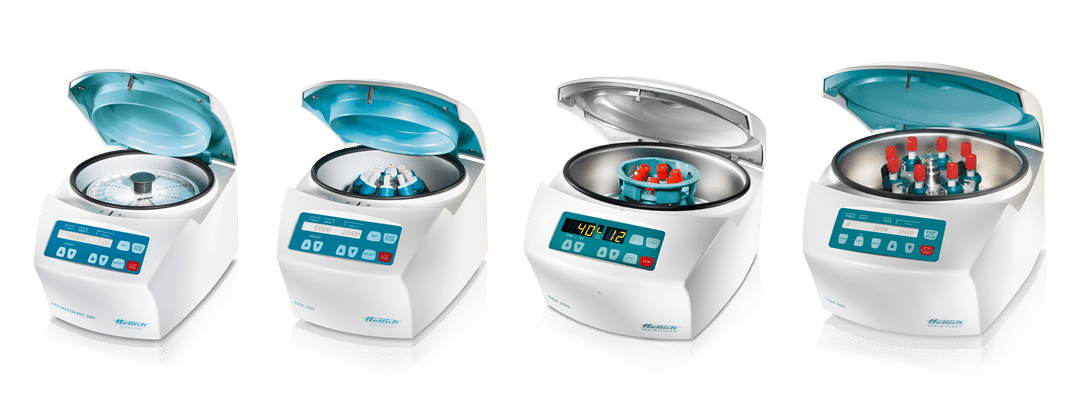
Haematocrit vs Other Centrifuges: Key Differences & Features
When it comes to laboratory centrifuges, selecting the right type is crucial for accurate diagnostics and efficient workflow. Among the various centrifuge types, haematocrit centrifuges stand out for their specialised role in blood analysis. This article delves into the distinctions between haematocrit centrifuges and other centrifuge types, highlighting their unique features and considerations for prospective buyers.
Understanding Haematocrit Centrifuges
Haematocrit centrifuges are specifically designed to measure the proportion of red blood cells (RBCs) in a blood sample, known as the haematocrit value. This measurement is vital for diagnosing conditions such as anaemia, polycythaemia, and dehydration. The process involves spinning capillary tubes filled with blood at high speeds to separate the components based on density, allowing for precise quantification of RBCs.

Comparing Centrifuge Types
To appreciate the unique attributes of haematocrit centrifuges, it's essential to contrast them with other common centrifuge types:
- Benchtop Centrifuges: Versatile and compact, these are commonly used in clinical and research laboratories for general sample separation. They accommodate various rotor types and sample sizes but may lack the precision required for haematocrit measurements.
- Microcentrifuges: Designed for small-volume samples, microcentrifuges are ideal for molecular biology applications, such as DNA or RNA extraction. However, they are not tailored for the specific requirements of haematocrit determination.
- High-Speed Centrifuges: Operating at speeds up to 30,000 rpm, these centrifuges are suited for applications requiring rapid sedimentation of particles, like protein purification. Their design focuses on speed rather than the specialised needs of haematocrit analysis.
- Refrigerated Centrifuges: These maintain low temperatures during operation, preserving temperature-sensitive samples. While beneficial for certain assays, they are not inherently designed for haematocrit testing.
 In contrast, haematocrit centrifuges are engineered with features such as fixed-angle rotors specifically accommodating capillary tubes, ensuring accurate and efficient haematocrit readings.
In contrast, haematocrit centrifuges are engineered with features such as fixed-angle rotors specifically accommodating capillary tubes, ensuring accurate and efficient haematocrit readings.
Key Features of Haematocrit Centrifuges
When considering the purchase of a haematocrit centrifuge, several features are paramount:
- Speed and Relative Centrifugal Force (RCF): Haematocrit centrifuges typically operate at speeds ranging from 7,000 to 15,000 rpm, generating sufficient RCF to separate blood components effectively.
- Rotor Capacity: Most models can accommodate up to 24 capillary tubes, allowing for simultaneous processing of multiple samples, enhancing laboratory throughput.
- Safety Features: Modern haematocrit centrifuges include safety mechanisms such as lid locks, imbalance detection, and automatic shut-off to protect users and maintain sample integrity.
- User-Friendly Interface: Digital displays and intuitive controls facilitate ease of use, reducing the likelihood of user error and ensuring consistent results.
- Compact Design: Their small footprint makes them suitable for laboratories with limited space, and some models offer portability for field use.
Considerations for Buyers
Before investing in a haematocrit centrifuge, potential buyers should evaluate:
- Sample Volume Needs: Assess the average number of samples processed daily to determine the appropriate rotor capacity.
- Speed Requirements: Ensure the centrifuge meets the necessary rpm and RCF specifications for accurate haematocrit measurements.
- Maintenance and Durability: Opt for models with robust construction and minimal maintenance requirements to ensure longevity and reliability.
- Budget Constraints: Balance the desired features with available budget, considering that investing in a quality centrifuge can lead to long-term savings through reduced downtime and maintenance costs.
Conclusion
Haematocrit centrifuges play a critical role in clinical diagnostics by providing precise measurements of red blood cell concentrations. Their specialised design differentiates them from other centrifuge types, making them indispensable in settings where accurate haematocrit readings are essential. By understanding their unique features and evaluating laboratory needs, buyers can make informed decisions to enhance their diagnostic capabilities.
You can check out our fully range of Centrifuges HERE.
